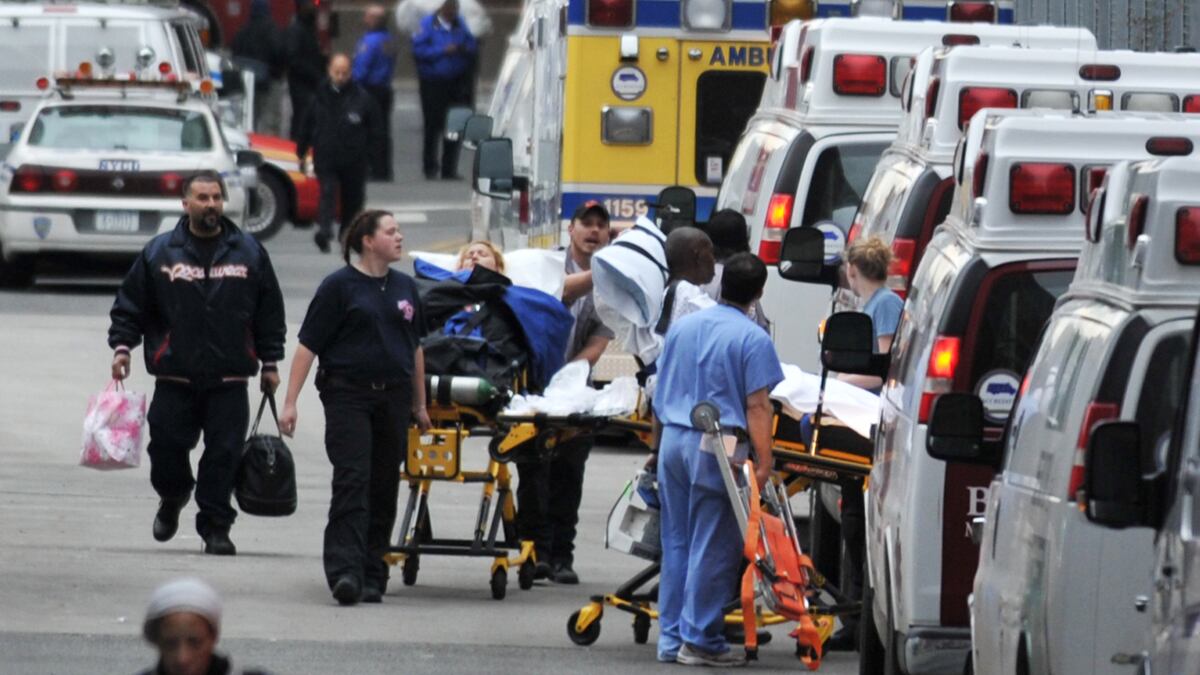We have now officially entered Sandy Phase Two, past the fear of drowning, the crashing trees, and the roaming packs of rats. Here comes the boring part where houses are rebuilt and power restored; where people find their way back to work and kids their way back to school.
Perhaps the most poignant story of the early days of Sandy is the image of sick infants being carried down a dozen flights of stairs in a suddenly powerless, unlit hospital. It had the same feel as the heroism of 9/11—the few risking their own skin to help out the weak. Too bad the story ended there though, because the real tale of heroism lies ahead, as these already weary, internally displaced patients adjust to their new surroundings.
In general, hospitals are in a delicate balance with the various patients they serve. Although an exact number is difficult to obtain, perhaps 100,000 or more people occupy and then re-occupy many of the hospital beds in New York City (a city of 8 million). They are, against their wishes, a cohort of chronic patients, those being treated and retreated for sometimes recalcitrant diseases such as cancer or AIDS or congestive heart failure, or else those receiving dialysis or fighting the losing battle against the progressive embarrassments of advancing age. Sure, many other people are hospitalized for a broken hip or a heart attack or a bout with pneumonia—but most then go back to their regular lives.
These veteran patients, though, are trapped in the cruel cycle of chronic illness, a two-steps-forward, one-and-a-half-steps back existence that requires unimaginable strength, optimism, and support. Their lives have become a string of hospitalizations, some good, some truly frightening. In this unwelcome role, a patient may come to rely on his one dependable anchor—a familiar place to recuperate.

So far, at least five New York City hospitals have been forced to evacuate and their patients moved; region-wide, the number is higher. This is troubling—treating illness requires predictability. You need to know where you are going when you are sick. You need to see people who know you and have been with you for a while. Instead, hundreds of patients now find themselves lying in strange rooms, blinking at strange nurses, with strange pictures on the wall and a strange street view.
And strange doctors too. Remember us? The once vital, now near-obsolescent, piece of the health-care food chain? One of the last places where we have value is when you’re hospitalized. The utility of a yearly check-up has been pretty much debunked—except this overlooked advantage: having a doctor who already knows you is a major bonus if you are hospitalized. It’s a familiar face when your time in the big house comes, someone who knows you as something other than the guy in room 1420; someone who has seen you in normal clothes with normal concerns and an appointment you have to get to real soon. Not a friend really, but a friendly presence.
Hospitals are incredible, even magical, places for the very sick, but they also can be brutal in their progressive stripping away of any individual attributes or identifying features. From uniform gowns to uniform food to uniform rooms to uniform treatment teams, a patient is threatened with becoming lost in a massive, infinitely complex shuffle that no one seems capable of slowing.
Except the doctor who knew you when. And the weirdest part is that he may be a lousy doctor. In my training years, I was always shocked at the strange allegiance of so many patients to the doctors who were the least modern, the least facile with the hospital apparatus, the least comfortable hanging around chewing the fat with the trainees. They were, I now realize, real doctors; people who entered people’s lives for the long haul and proved themselves time and again in a pinch. Not because of diagnostic acumen or knowledge of some new study, but from real aptitude at that most primitive requirement of good doctoring—an ease with human contact.
This is lost for the hundreds who have been swapped out to foreign rooms, miles from the familiar and light years from the comforting. This is not to say that the displaced patients will not do well in their new surroundings. Some may benefit and decide to leave their old lives (and hospitals and doctors) behind. But there is a quiet tragedy to moving so many from the one touchstone of solace they have—especially in a place, the hospital, that is famously short on consolations.






